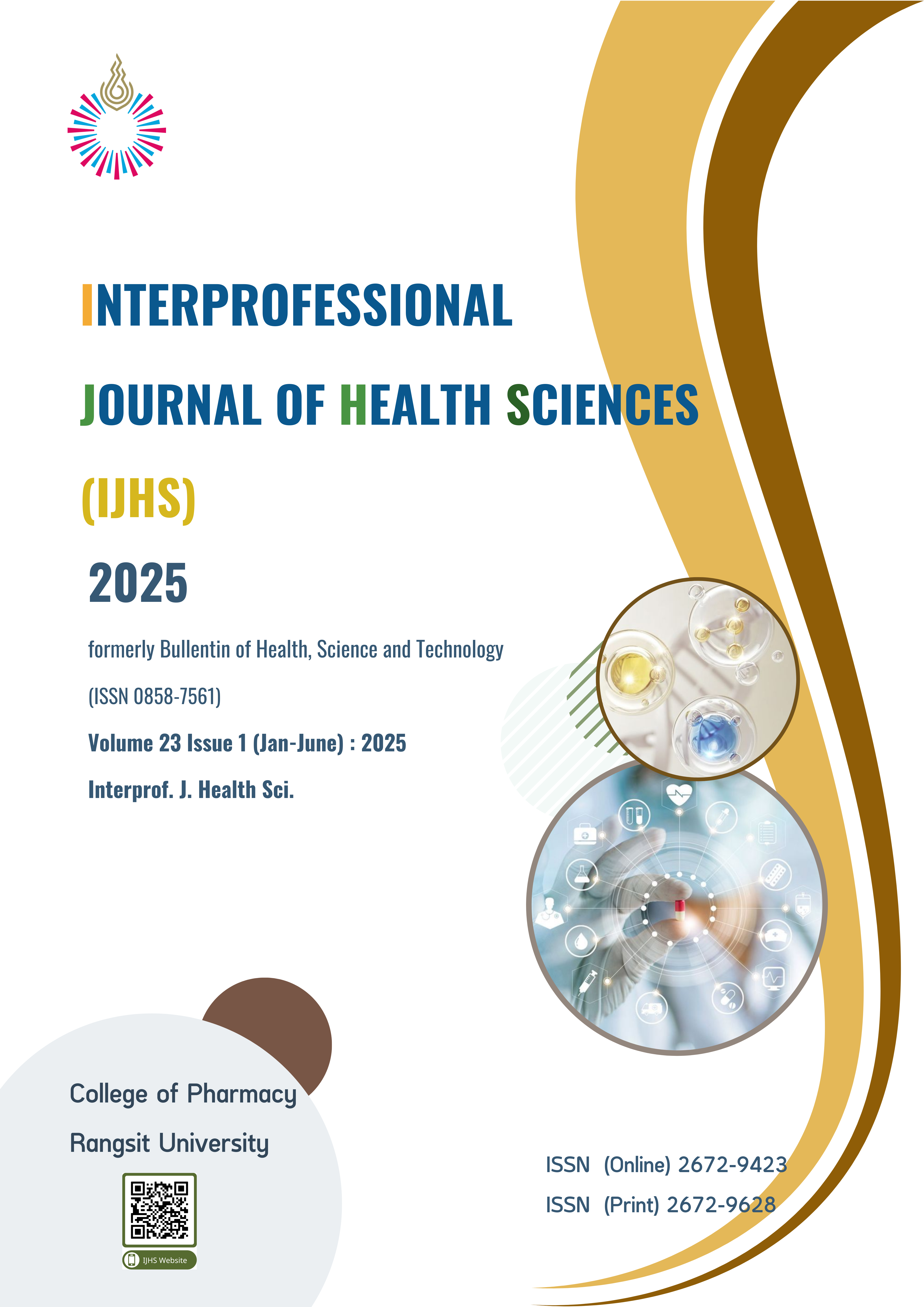Development and Assessment of Instructional Material to Enhance Microsoft Excel Learning in a Pharmacology Laboratory
Main Article Content
Abstract
Microsoft Excel is a widely used tool for data management, analysis, and presentation in various fields, including healthcare and education. In the PHA 352 course, Pharmacology Laboratory for Pharmacy Students, at the College of Pharmacy, Rangsit University, students use Microsoft Excel to calculate and present experimental data. However, many students encounter difficulties with Microsoft Excel's basic and advanced scientific functions, highlighting the need for targeted training to meet course demands. This study aimed to develop instructional material for Microsoft Excel via the ADDIE model for the PHA 352 course. Students’ perceptions of the material, as well as their understanding and skills in using Microsoft Excel, were evaluated. Pretest and posttest designs were used to measure competency levels, with a focus on essential Microsoft Excel functions for the course. Statistical significance between the scores was determined using a paired t-test or Wilcoxon signed-rank test at the 0.05 level. An online questionnaire was used to assess students’ satisfaction with and perceived effectiveness of the material's content, exercises, and usability. Data were analyzed via descriptive statistics. The results from 160 third year pharmacy students revealed a significant improvement in posttest scores compared with pretest scores, demonstrating the effectiveness of the instructional material in enhancing Microsoft Excel skills. The findings indicate that students were highly satisfied, valuing how the material aligned with the course objectives and its practical uses. In conclusion, the instructional material for Microsoft Excel was effective in enhancing students’ Microsoft Excel skills.
Article Details

This work is licensed under a Creative Commons Attribution-NonCommercial-NoDerivatives 4.0 International License.
Journal of TCI is licensed under a Creative Commons Attribution-NonCommercial-NoDerivatives 4.0 International (CC BY-NC-ND 4.0) licence, unless otherwise stated. Please read our Policies page for more information.
References
Lee G, Caton E, Ding A. Evaluating digital competencies for pharmacists. Res Social Adm Pharm. 2023;19(5):753-7. https://doi.org/10.1016/j.sapharm.2023.01.012
Entringer Bottacin W, de Souza TT, Melchiors AC, Reis WCT. Preparing Pharmacists for the Digital Age: How Pharmacy Courses are Adapting to Challenges and Opportunities. Am J Pharm Educ. 2024;88(6):100700. https://doi.org/10.1016/j.ajpe.2024.100700
Matsuyama T, Machida K, Hamu A, Takagi K, Momi H, Higashimoto I, et al. Effects of instructional materials on the proper techniques of inhaler device use. Respir Investig. 2022;60(5):633-9. https://doi.org/10.1016/j.resinv.2022.04.010
Lee Y-H, Hsiao C, Ho C-H. The effects of various multimedia instructional materials on students' learning responses and outcomes: A comparative experimental study. Comput Hum Behav. 2014;40:119-32. https://doi.org/10.1016/j.chb.2014.07.041
Ruisoto Palomera P, Juanes Méndez JA, Prats Galino A. Enhancing neuroanatomy education using computer-based instructional material. Comput Hum Behav. 2014;31:446-52. https://doi.org/10.1016/j.chb.2013.03.005
Branch RM. Instructional Design: The ADDIE Approach. NY: Springer New York; 2009. https://doi.org/10.1007/978-0-387-09506-6
Johri N. Introduction to Healthcare Data and the Role of Excel®. New York: Springer Publishing Company. p. 1-10.
Alowais M, Rudd G, Besa V, Nazar H, Shah T, Tolley C. Digital literacy in undergraduate pharmacy education: a scoping review. J Am Med Inform Assoc. 2024;31(3):732-45. https://doi.org/10.1093/jamia/ocad223
Warner CB, Meehan AM. Microsoft Excel™ as a Tool for Teaching Basic Statistics. Teach Psychol. 2001;28(4):295-8. https://doi.org/10.1207/S15328023TOP2804_11


